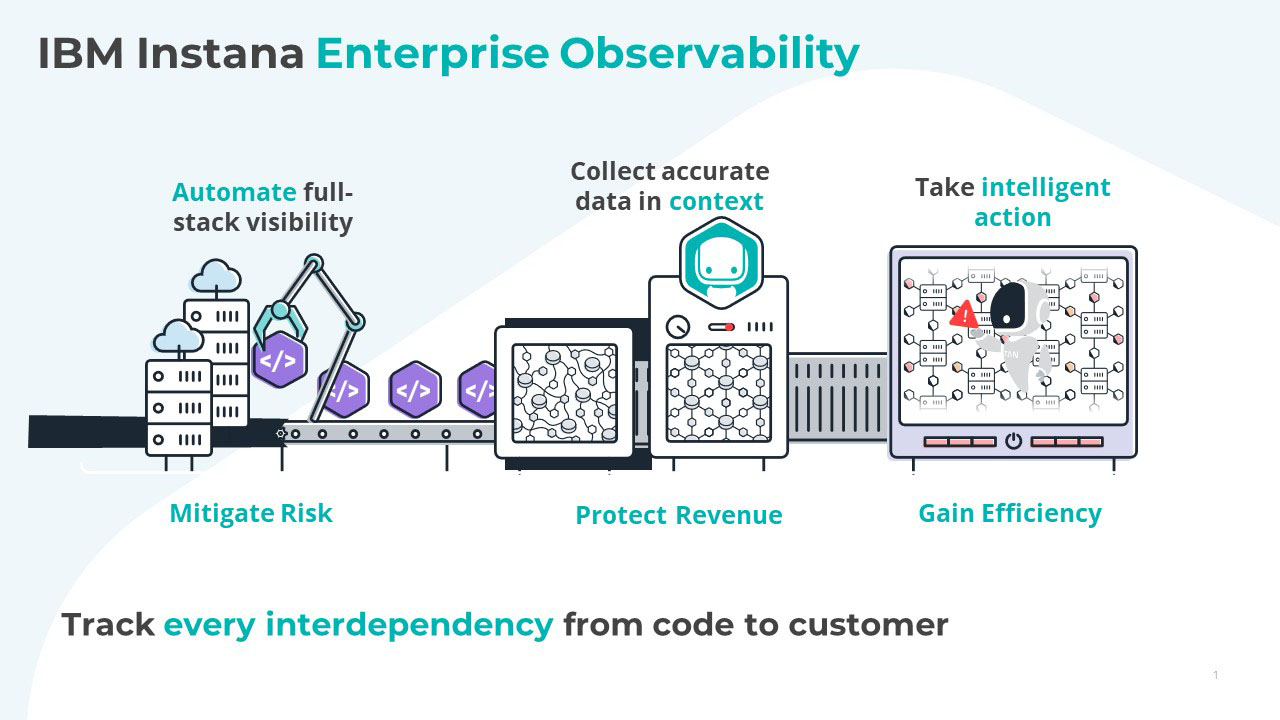IBM India/South Asia Blog
Observability to drive application performance in today’s hybrid world

By Siddhesh Naik
In today’s ultra-competitive and highly digitized world, customers expect services delivered at the speed of light while being more accessible and customized.
It is no different with employees and partners. Or, for that matter, the entire ecosystem enterprises deal with.
To support these dynamic preferences of diverse stakeholders, enterprises are deploying new applications and infrastructure. So much so, that as per IDC, 80% of enterprises estimate they have up to 1000+ applications in their portfolio today.
This introduces new complexity for IT departments.
Moreover, as businesses have become digital, their applications are the business, and the business is the application. That means applications and IT services need to be available and they need to perform without any latency.

If the application simply slows down, there’s a risk of losing revenue, a risk of damage to the brand’s reputation, and the customer experience will suffer leading to frustration and abandonment. For example, a leading ecommerce player calculated that every 0.1 seconds of latency cost them 1% in sales.
In addition to the complexity brought about by the sheer number of applications, the application landscape itself is going through a change – from monolithic to microservices architecture, shifting to mobile applications and hybrid cloud. And this results in new challenges.

As Vipindas Vazhuthakkad, Industry Principal, Information Systems, Infosys IT puts it, “This brings about a big challenge in terms of handling a huge breadth of technology, reduced control, as well as managing performance of all components in distributed systems.”
As organizations of all sizes transform to modern software development practices – microservices, cloud-native, DevOps, CI/CD and others – they are finding their legacy Application Performance Management (APM) solutions inadequate to handle the new complexities of a digital world.
That is because, those very things that are streamlining application development are also making it harder to monitor, remediate and stabilize the production deployments.
Moreover, as the landscape becomes more distributed, the key business problem faced by several organizations – if not most – is the lack of visibility into applications and infrastructure. So, even as software development is streamlined, the traceability from the line of code to customer interaction is becoming more complex.
As the saying goes, you can’t fix what you can’t see.
Consider an example of a UPI system facing downtime. Your traditional APM will tell you that UPI is down. However, in today’s complex, hybrid, and distributed world, the need is to track down to the last line of code causing the issue – whether at the message queue layer, ESB layer, or API layer. This needs to happen fast because having a UPI system down for too long can wreak havoc on the end users.
As a result, many organizations are starting to look beyond just APM, towards observability. The power of observability is in its ability to monitor the front-end, any platforms, and the back-end in real-time, all in a single view.
Observability takes monitoring and APM a step further by applying context between all the assets and provides deep visibility into modern distributed systems for faster, automated problem identification and resolution.
Vipindas adds, “The need of the hour is a highly automated observability platform that can sense, comprehend, correlate and respond in a dynamic manner to all the events happening in this distributed environment.”
How can IBM help?
IBM Instana Observability is a fully automated enterprise observability platform that delivers the context needed to take intelligent action and ensure optimum application performance.

Automate full-stack visibility
- The platform is enabled with AI and machine learning to provide continuous discovery – so new deployments and any changes are automatically detected and configured.
Data in context
- Instana automatically discovers everything in your environment and provides a topographical map of all interdependencies and a view of how everything communicates with each other.
Take intelligent action
- It will automatically detect anomalies, identify the root cause, and alert the correct team or problem owner immediately for a quick resolution.
It’s no surprise then that IBM Instana has been rated as a leader by Gartner in its Magic Quadrant for APM and Observability Solutions.
To conclude, the APM market is rapidly moving towards automation with the integration towards open-source technologies and hybrid-cloud monitoring. Observability in essence will be to have reliable information in an instant, to reduce the impact of downtime and to use automation to stop incidents from escalating into crisis situations.
Test if your application environment is ready for accelerated digital transformation, using this quick assessment.

Siddhesh Naik, Country Leader, Data, AI & Automation software, Technology Sales, IBM India & South Asia